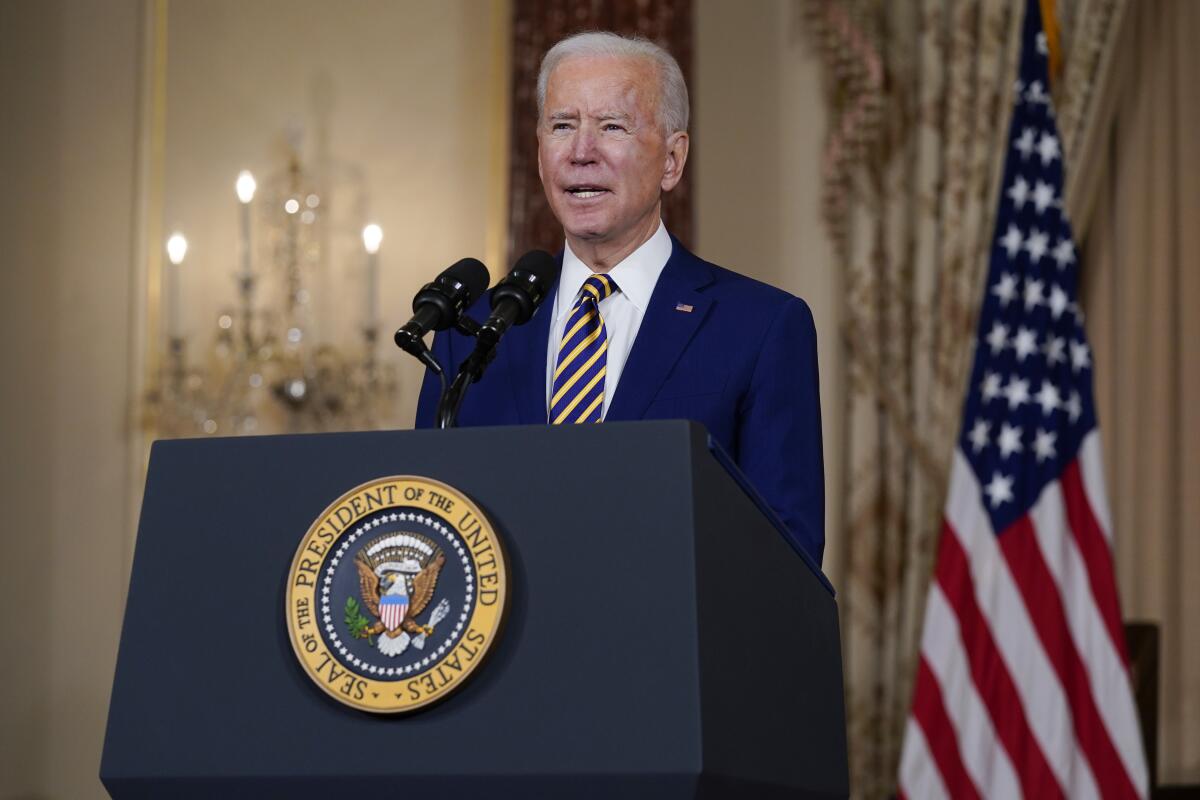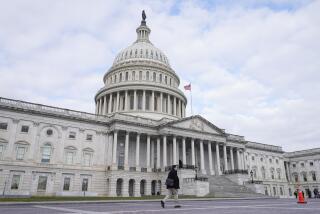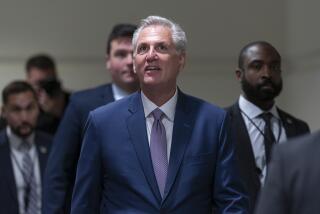Editorial: Biden is making a big push against child poverty. But for how long?

President Biden wants Congress to take an open-the-spigots approach to the COVID-19 pandemic, spending almost $1.9 trillion on a slew of efforts to beat the disease, help desperate households and businesses, fill yawning gaps in state and local budgets and pump up the economy. The COVID relief bill advancing through the House would also provide targeted help to low-income Americans and families with children, potentially making a big dent in poverty in this country.
The attention to those at the bottom of the economic ladder is welcome, given that the miseries of the pandemic were felt more deeply by poor Americans than prosperous ones. COVID-19 reversed years of slow but steady progress against poverty in the United States; according to researchers at Columbia University, the poverty rate rose from 15% in February 2020 to almost 17% in September.
But there’s one important caveat about the Biden plan and the House bill implementing it: Most of the anti-poverty provisions would expire after one year.
The exception is the proposal to more than double the federal minimum wage to $15 an hour by 2025, which the Congressional Budget Office projects would lift 900,000 people’s incomes above the poverty line. It’s long past time for Congress to raise the federal minimum, which has languished at $7.25 an hour for more than a decade. (California’s minimum is $13 and will rise to $15 in 2023.) But that proposal could die in the Senate, where Republicans and a handful of moderate Democrats argue that such a large increase in the minimum wage would cause too many entry-level jobs to be lost.
By contrast, there’s bipartisan support for modifying the tax code and child welfare programs to do more to combat poverty. The budget reconciliation bill approved by the House Ways and Means Committee last week, which implements the tax-related parts of Biden’s COVID relief plan, would do both in worthwhile and at times novel ways.
The tax code currently includes a child tax credit of up to $2,000, but only a portion of that is “refundable,” or available even if you pay less than that amount in taxes. So the full benefit doesn’t go to the people who need it the most. The House bill would fix that, making the credit fully refundable, raising it significantly and, potentially most helpfully, advancing it to eligible families in the form of monthly payments.
It’s not cheap — the price tag is almost $110 billion, by the Joint Tax Committee’s estimates. And as the Tax Policy Center notes, the IRS doesn’t have a system in place today to pay monthly benefits, unlike, say, the Social Security Administration or the Department of Veterans Affairs. But the potential payoff is a sharp decrease in poverty, and particularly in child poverty, according to an analysis by the Niskanen Center, a moderate-to-libertarian think tank.
The bill would also extend and improve the earned income tax credit, which Congress created in 1975 to give low-wage earners a bigger financial reward for working. In addition to making the credit available to more low-income people — particularly single, childless teens and young adults — it would raise the maximum benefit for single, childless workers from about $500 to a little more than $1,500. That provision is expected to cost more than $26 billion.
These are sensible steps that target aid to where it’s needed most, and they would make a real difference in millions of Americans’ lives even if the aid expires after one year. But entrenched, intergenerational poverty will still plague this country after the pandemic is gone. Congress should start work now on a permanent version of the poverty-fighting tax changes in the Biden plan.
Lawmakers have floated a number of potential ways to do that. One example: Republican Sen. Mitt Romney of Utah has proposed consolidating several anti-poverty programs into larger tax credits for low-income workers and families with children. By also eliminating the federal tax deduction for state and local taxes, Romney’s proposal would be deficit neutral. And by the Niskanen Center’s estimates, it would lift even more people out of poverty than Biden’s proposal.
Although lawmakers may not want to make the specific tradeoffs Romney proposes, he’s on the right track in terms of making anti-poverty programs sustainable as well as simpler, easier to administer, more widely available and more effective. It’s also important to shift away from multiple programs targeted to different needs — childcare, housing, healthcare, etc. — to broader cash benefits that let low-income Americans spend the aid where it’s most useful to them.
Congress is moving fast on Biden’s plan to address COVID-19. But after that work is done, it needs to keep its focus on poverty to make sure the lifelines offered this year aren’t yanked away in 2022.
More to Read
A cure for the common opinion
Get thought-provoking perspectives with our weekly newsletter.
You may occasionally receive promotional content from the Los Angeles Times.










